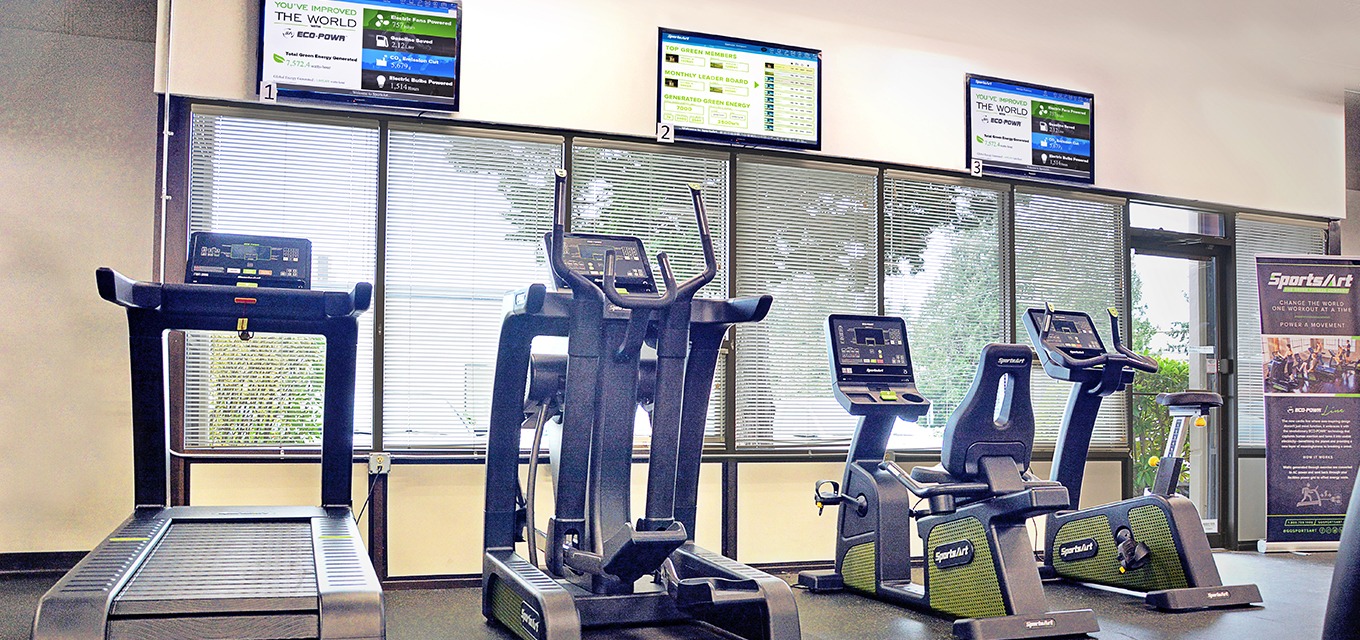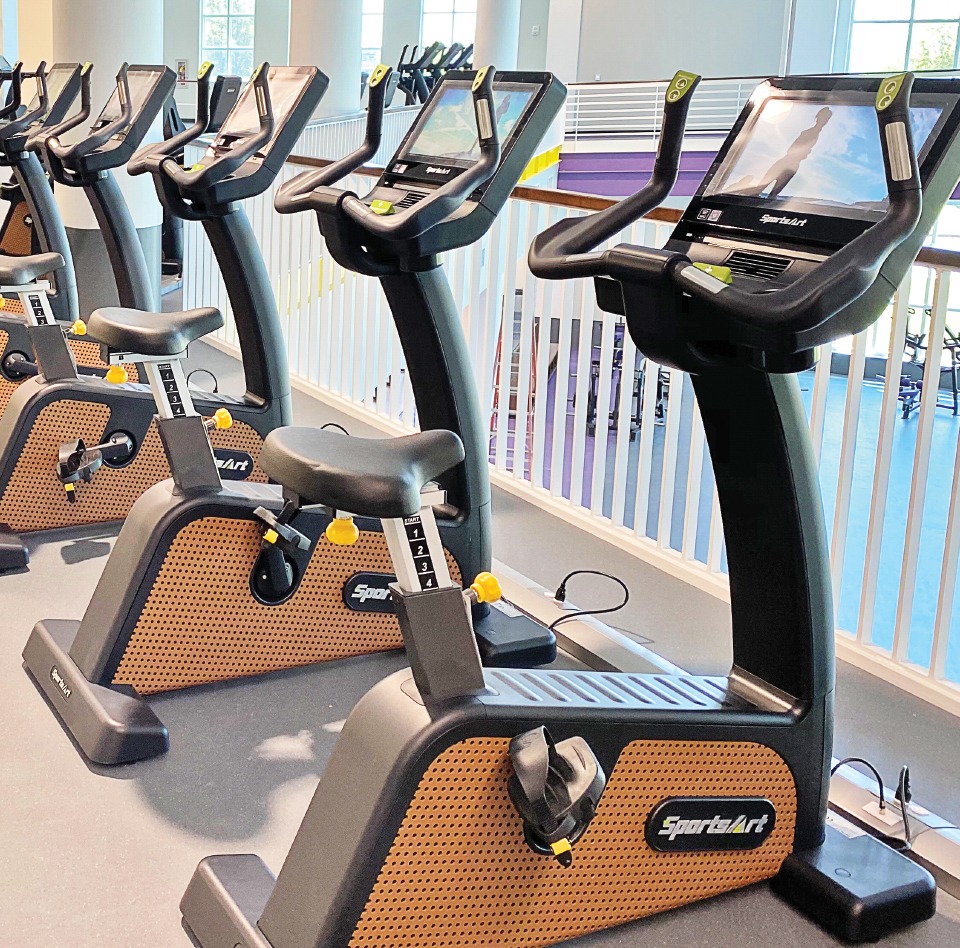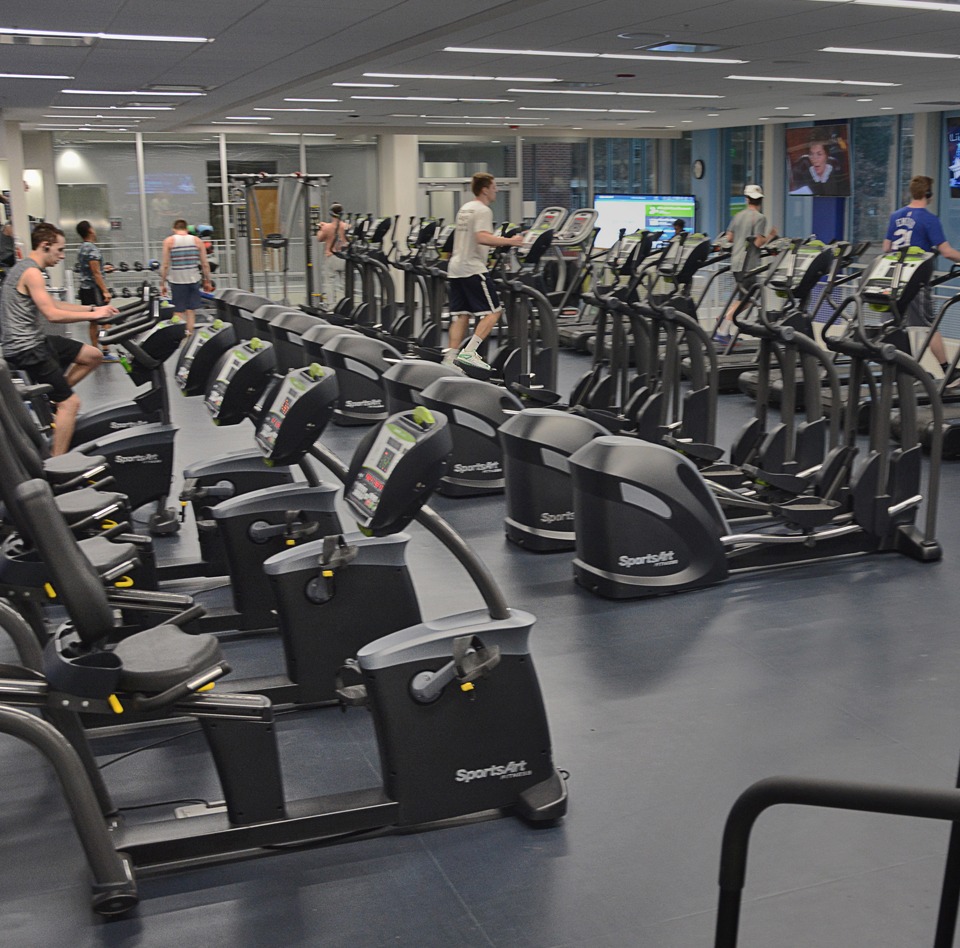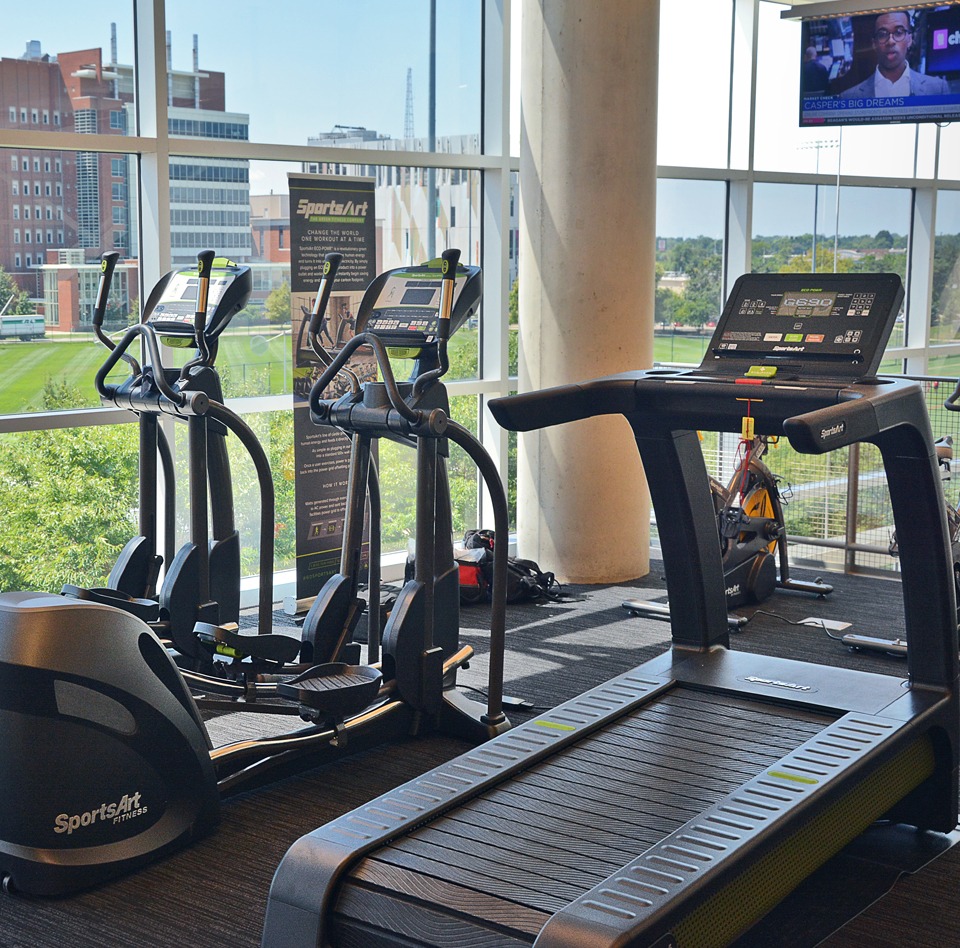SUSTAINABLE RECREATION
Campus recreation centers are a hub for student engagement and overall wellbeing. They are also a key stop on campus tours helping attract prospective and incoming students by showcasing the quality of student affairs at the college or university. Utilize your rec center as an engagement tool by aligning everyday operations with the sustainable mindset of incoming students to exceed expectations and stand out from the competition.
75% of students use on-campus recreation center facilities.
Almost 90% of students that use a campus rec center spend at least 30 minutes per visit.
47% of recreation facilities are accountable for annual building energy consumption.
72% of Generation Z’s are willing to pay more for a sustainable product or offering.
4000 higher-education projects have been LEED-certified, with the majority achieving Gold or better.
650 college and university presidents from all 50 states have pledged their institutions will achieve carbon neutrality under the climate leadership commitments.
800 colleges and universities are measuring their comprehensive environmental performance under STARS (Sustainability Tracking, Assessment & Rating System).

The ECO-POWR™ line of premium cardio equipment integrates innovative technology with thoughtfully designed products that harness and convert human energy into usable electricity.
With every movement a student takes, energy is being generated. ECO-POWR™ products harness that energy to produce up to 250 watt-hours of electricity, creating an overall reduction in your property’s carbon footprint.

The ECO-NATURAL™ line boasts energy saving fitness equipment that offers individuals a sustainable and intuitive workout experience embodied within a sleek and modern design.
Whatever your school’s sustainability goals may be, zero out your fitness equipment by utilizing equipment that is energy independent.

The SENZA™ line features SportsArt’s top of the line cardio equipment, designed to house the premium SENZA™ technology and entertainment system. The intuitive console actively engages students by providing a streamlined approach to workouts while allowing them to consume entertainment, their way.
Reduce energy consumption while engaging students with SENZA™ touchscreen technology.
TECHNOLOGY TO ENGAGE
With the SA WELL+™ system, not only can students visualize the cumulative impact their workouts have on the environment, they can track their individual contribution to the overall goals. Utilize their energy generation for power-a-thon events or top green producer challenges to continually engage the student body population.

Some students prefer to lose themselves in workouts by watching television or personal content as they workout. With built-in SENZA™ consoles, students can stream any entertainment they want seamlessly from their personal devices with ANYcast, or watch TV on the built-in console.
CAMPUS REC PARTNERS
Subscribe to our Green Fitness Newsletter to stay informed on all things sustainable for your fitness facility.








